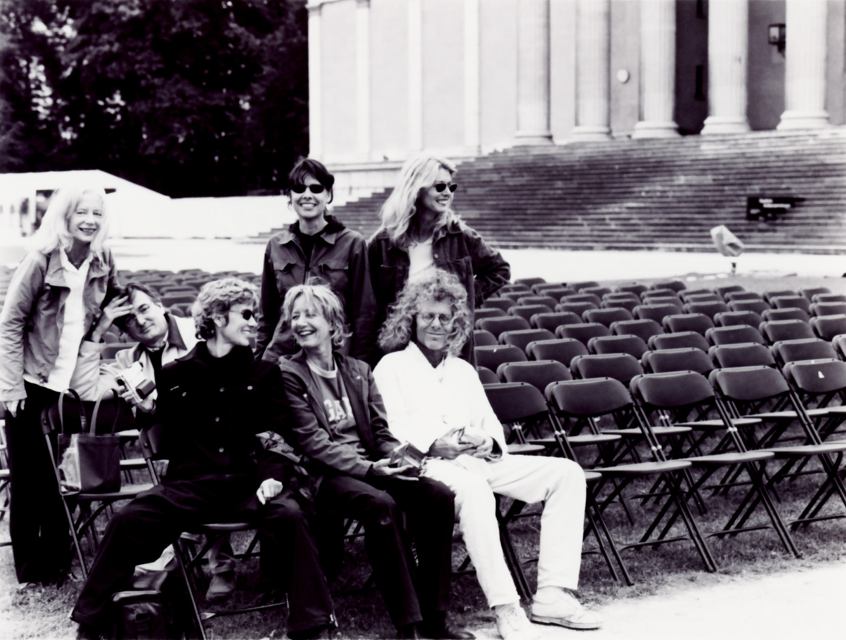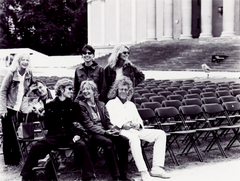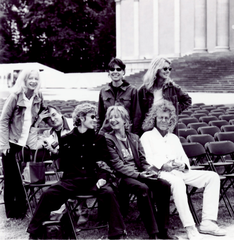
Staatliche Antikensammlung Visiting Hours, Tickets, and History in Munich
Date: 18/07/2024
Discover the Staatliche Antikensammlung: History and Significance
The Staatliche Antikensammlung, or the State Collection of Antiquities, is a pivotal cultural institution in Munich, Germany. It offers an extensive exploration of ancient civilizations through its rich collection of Greek, Roman, Etruscan, Near Eastern, and Egyptian artifacts. Established in the early 19th century, the museum originally housed the growing collection of antiquities amassed by King Ludwig I of Bavaria, reflecting his ardent admiration for classical art and culture (Bavarian State Collection of Antiquities). The collection’s journey began within the walls of the Glyptothek, another museum founded by Ludwig I focusing on sculptures, before finding its permanent home in the neoclassical building designed by Georg Friedrich Ziebland in 1848 (Munich Tourist Information).
The Staatliche Antikensammlung offers a profound historical narrative that spans several millennia, with highlights including Greek vases, Roman glassware, and Etruscan bronzes. The museum is committed to preserving and presenting these ancient treasures through its extensive educational programs, modern technological integrations, and collaborative exhibitions with international institutions. The museum’s resilience is also noteworthy, having undergone significant restoration post-World War II to continue serving as a beacon of cultural preservation and education (Bavarian State Collection of Antiquities).
For those planning a visit, the museum is conveniently located at Königsplatz, easily accessible by public transport. It offers a variety of visitor amenities, including guided tours, audio guides, and accessibility features, ensuring a comprehensive and enjoyable experience for all. This guide aims to provide detailed insights into the history, visitor information, and travel tips to make the most out of your visit to the Staatliche Antikensammlung.
Table of Contents
- Introduction
- Origins and Establishment
- Architectural Development
- Transition to an Antiquities Museum
- Expansion of the Collection
- World War II and Reconstruction
- Modernization and Technological Integration
- Notable Exhibitions and Collaborations
- Educational Programs and Outreach
- Preservation and Conservation Efforts
- Future Directions
- Visitor Information
- Nearby Attractions
- FAQ
- Conclusion
Exploring the Staatliche Antikensammlung - History, Visiting Hours, and Tickets
Introduction
The Staatliche Antikensammlung, or State Collection of Antiquities, in Munich, Germany, is a premier museum dedicated to the art and artifacts of ancient civilizations. This comprehensive guide provides detailed historical insights, visitor information, and travel tips to make your visit memorable.
Origins and Establishment
The Staatliche Antikensammlung began in the early 19th century when King Ludwig I of Bavaria started collecting Greek and Roman antiquities. His passion for classical art and culture led to the establishment of this significant museum. Initially, the collection was housed in the Glyptothek, another museum founded by Ludwig I, which focused on sculptures (Bavarian State Collection of Antiquities).
Architectural Development
The current building, designed by architect Georg Friedrich Ziebland, was completed in 1848 and originally served as the Bavarian Army Museum. This neoclassical structure, with its grand columns and pediments, now perfectly complements the classical themes of the Staatliche Antikensammlung’s collection (Munich Tourist Information).
Transition to an Antiquities Museum
In 1905, the Bavarian Army Museum moved to the New Castle in Ingolstadt, and the building was renovated to accommodate the growing collection of antiquities. The Staatliche Antikensammlung officially opened in 1967, aligning with King Ludwig I’s vision (Bavarian State Collection of Antiquities).
Expansion of the Collection
Over the years, the museum expanded its collection through acquisitions, donations, and archaeological excavations. Today, it features artifacts from ancient Greece, Rome, and Etruria, as well as pieces from the Near East and Egypt. Highlights include Greek vases, Roman glassware, and Etruscan bronzes (Munich Museums).
World War II and Reconstruction
During World War II, the museum sustained damage from Allied bombing raids, and many artifacts were relocated for protection. Post-war restoration efforts culminated in the museum’s reopening in 1967, symbolizing resilience and dedication to cultural preservation (Bavarian State Collection of Antiquities).
Modernization and Technological Integration
In recent years, the museum has incorporated modern technology to enhance the visitor experience. Interactive displays, digital guides, and virtual tours offer deeper insights into the artifacts and their historical contexts, making the museum more accessible globally (Munich Tourist Information).
Notable Exhibitions and Collaborations
The Staatliche Antikensammlung hosts various temporary exhibitions that explore ancient cultures and the influence of classical art. Collaborations with international museums and research institutions have bolstered its reputation as a center for ancient art study (Bavarian State Collection of Antiquities).
Educational Programs and Outreach
The museum offers diverse educational programs, including guided tours, workshops, lectures, and special events for all ages. These initiatives aim to engage the public with the ancient world, particularly school groups and families (Munich Museums).
Preservation and Conservation Efforts
Dedicated to artifact preservation, the museum employs conservators who use advanced techniques to maintain the collection. Ongoing research and conservation projects ensure the longevity of these ancient treasures (Bavarian State Collection of Antiquities).
Future Directions
The Staatliche Antikensammlung plans to expand its collection and enhance exhibitions through innovative curatorial practices. Future developments include augmented reality experiences and expanding digital archives for greater accessibility (Munich Tourist Information).
Visitor Information
- Staatliche Antikensammlung Visiting Hours - The museum is open Tuesday to Sunday from 10:00 AM to 5:00 PM. Closed on Mondays and public holidays.
- Staatliche Antikensammlung Tickets - General admission is €6, with discounts available for students and seniors. Children under 18 enter for free.
- Travel Tips - The museum is located at Königsplatz, easily accessible by public transport. Consider combining your visit with a trip to nearby attractions such as the Glyptothek and the Lenbachhaus.
Nearby Attractions
- Glyptothek - Another museum founded by King Ludwig I, focusing on ancient sculptures.
- Lenbachhaus - A renowned gallery featuring modern art, including works by the Blue Rider group.
- Königsplatz - A historic square that hosts numerous cultural events and offers picturesque views.
FAQ
- What are the Staatliche Antikensammlung opening hours? The museum is open Tuesday to Sunday from 10:00 AM to 5:00 PM.
- How much are tickets to the Staatliche Antikensammlung? General admission is €6, with free entry for children under 18.
- Is the museum accessible? Yes, the museum offers accessibility features for visitors with disabilities.
Conclusion
By understanding the rich history of the Staatliche Antikensammlung and utilizing this visitor guide, you can fully appreciate the depth and significance of its collection, making your experience both educational and memorable. Stay updated by following the museum on social media and visiting their official website. Embrace the opportunity to connect with the ancient world and gain a deeper appreciation for the art and artifacts that have shaped human history.







































































































